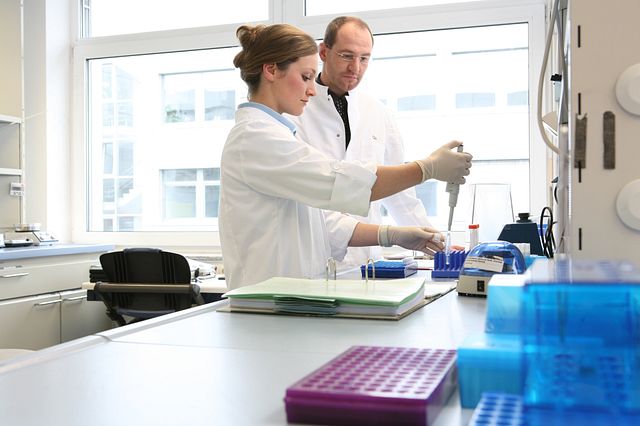Bioactivity & Potency Assays
Potency testing is necessary to ensure the quality, safety, and efficacy of biopharmaceutical products, as well as the confirmation of biocomparability between an innovator and biosimilar product. Our full range of potency testing services for a variety of biologics includes both in vivo and in vitro bioassays.
Potency testing and bioassay development services:
- Method development, transfer, and optimization
- Phase-appropriate method validation
- Lot release testing for drug substance and drug product
- Stability storage and testing
- Accelerated stress studies
- Comparability testing between innovator and biosimilar biological products
Genetically Modified Microorganisms (GMM) in Cell and Gene Therapy
With the growth of gene and cell therapies, advances in the development and validation of suitable in vivo and in vitro assays have become necessary in order to test the efficacy, safety, and ultimately the potency of these products. We’re experienced in genetically modified microorganisms (GMM), which are essential in this area. GMMs are used to produce medicines and vaccines that treat or prevent diseases.
Here are some applications:
- Genetically modified bacteria were the first organisms to be modified in the laboratory due to their simple genetics, and are particularly important in producing large amounts of pure human proteins for use in medicine.
- Genetically modified viruses can be used to deliver genes that can cure diseases in humans.
In addition, our transgenic mouse models provide researchers with high-quality, validated research models for gene research and drug development.
Frequently Asked Questions (FAQs) About Potency Testing
-
What is bioactivity testing?
The biological activity of a product reflects the ability or capacity of a product to achieve a defined biological effect. This is another way of referring to potency testing.
-
What is a cell-based bioassay?
Cell-based bioassays are used to determine the biological activity of a biopharmaceutical product by evaluating the potency, efficacy, and quality.
-
How do you perform potency testing of a drug?
Potency testing could involve either in vitro or in vivo tests, or both, which have been specifically designed for each product to indicate its potency. It’s expressed in units and is the quantitative measure of biological activity based on the attribute of the product which is linked to the relevant biological properties.
Normally, for a vaccine or other biological product, the potency of the product reflects the quantity of active ingredient and therefore the assay should predict clinical benefit. The complexity of biologics means potency assays should provide an indication of not only quantity, but also the total activity of an active ingredient. Larger amounts of potency correlate with greater activity (preferably linear). Potency assays must possess characteristics that are amenable to validation, indicate stability and are precise enough to assure that the dose is safe and effective throughout its shelf life.
-
What are the approaches for biological assay validation?
ICH Guideline Q2 (R1) outlines the approach that is necessary for the validation of analytical procedures and where possible is the guideline that should be followed for all in vitro and in vivo assay validations.
The following are the typical validation characteristics which should be considered:- Accuracy
- Precision
- Repeatability
- Intermediate precision
- Specificity
- Detection limit
- Quantification limit
- Linearity
- Range

